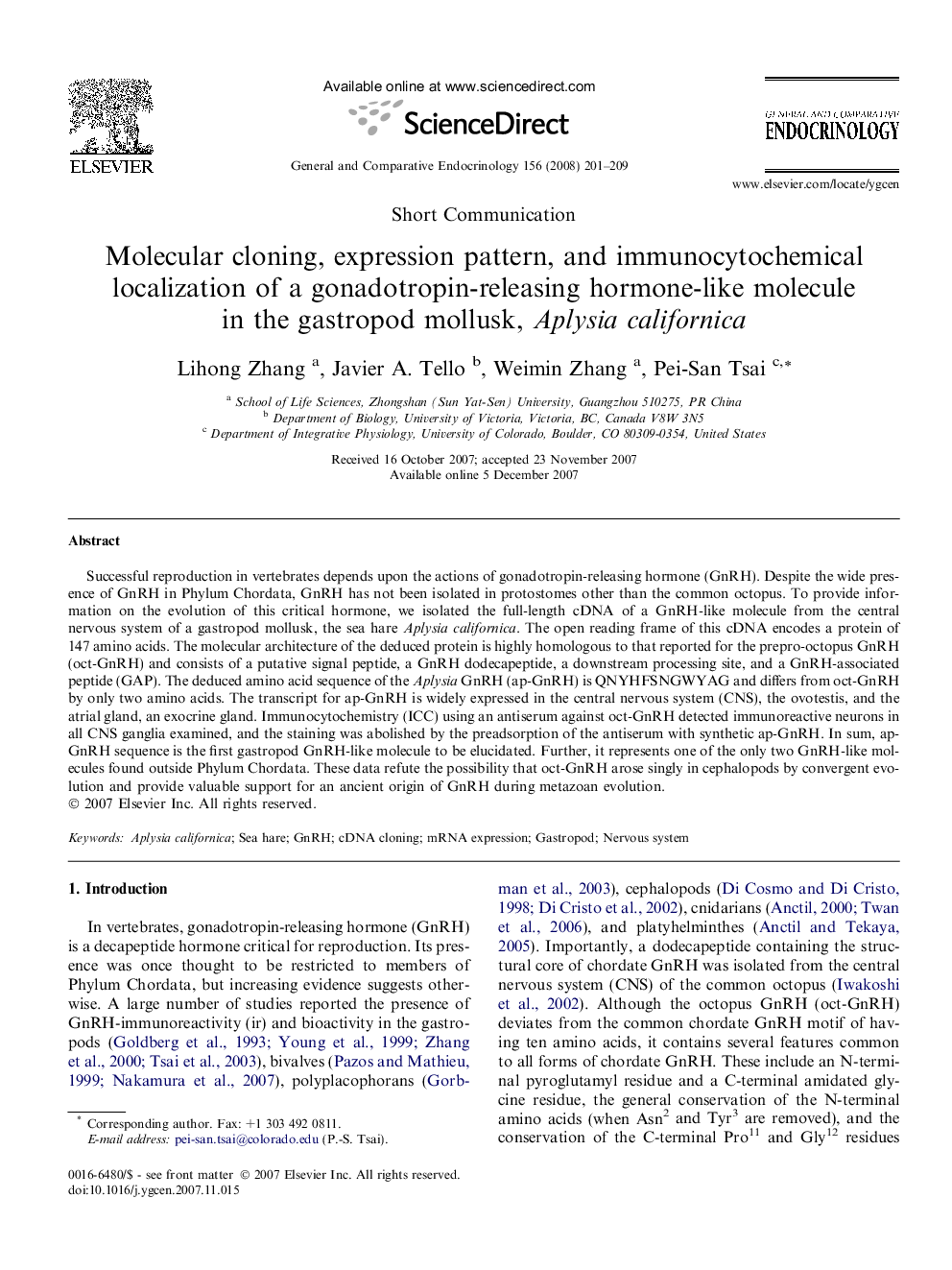| Article ID | Journal | Published Year | Pages | File Type |
|---|---|---|---|---|
| 2801638 | General and Comparative Endocrinology | 2008 | 9 Pages |
Successful reproduction in vertebrates depends upon the actions of gonadotropin-releasing hormone (GnRH). Despite the wide presence of GnRH in Phylum Chordata, GnRH has not been isolated in protostomes other than the common octopus. To provide information on the evolution of this critical hormone, we isolated the full-length cDNA of a GnRH-like molecule from the central nervous system of a gastropod mollusk, the sea hare Aplysia californica. The open reading frame of this cDNA encodes a protein of 147 amino acids. The molecular architecture of the deduced protein is highly homologous to that reported for the prepro-octopus GnRH (oct-GnRH) and consists of a putative signal peptide, a GnRH dodecapeptide, a downstream processing site, and a GnRH-associated peptide (GAP). The deduced amino acid sequence of the Aplysia GnRH (ap-GnRH) is QNYHFSNGWYAG and differs from oct-GnRH by only two amino acids. The transcript for ap-GnRH is widely expressed in the central nervous system (CNS), the ovotestis, and the atrial gland, an exocrine gland. Immunocytochemistry (ICC) using an antiserum against oct-GnRH detected immunoreactive neurons in all CNS ganglia examined, and the staining was abolished by the preadsorption of the antiserum with synthetic ap-GnRH. In sum, ap-GnRH sequence is the first gastropod GnRH-like molecule to be elucidated. Further, it represents one of the only two GnRH-like molecules found outside Phylum Chordata. These data refute the possibility that oct-GnRH arose singly in cephalopods by convergent evolution and provide valuable support for an ancient origin of GnRH during metazoan evolution.
